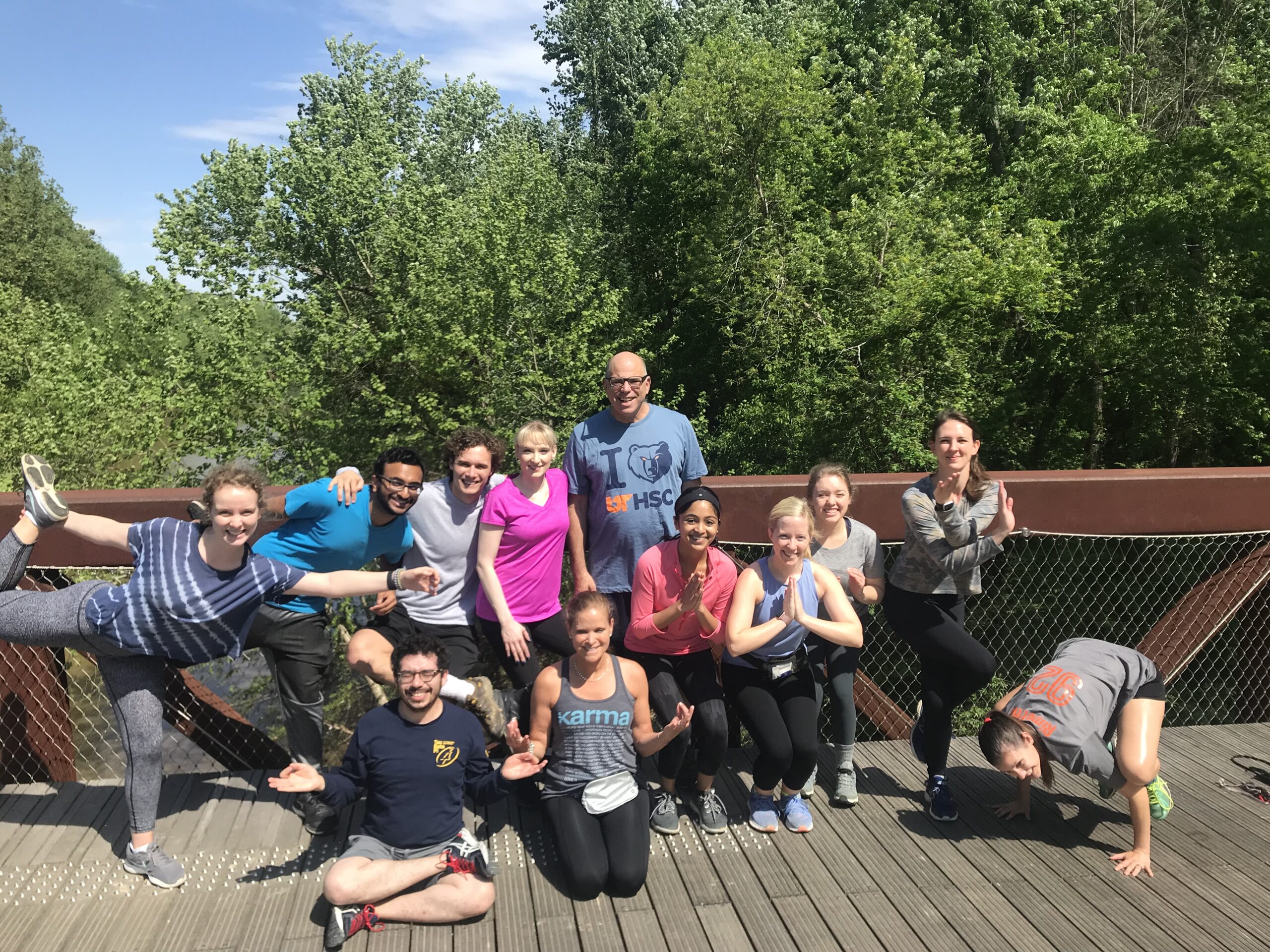Students and faculty at The University of Tennessee Health Science Center can leave their academic cares behind for a bit as they practice meditation, yoga and Pilates—or simply relax in a Zen lounge. It’s all part of the new Mind Body Wellness center, which at press time was on the cusp of opening. Despite the recent attention to well-being in medical schools, physical space focused on wellness remains an emerging concept.
Located within UTHSC’s Student-Alumni Center, the space emerged from a desire to help stressed students in need of more than a workout but not therapeutic support. “We didn’t really have something in between,” says Kimberlee Strome, a Pilates and yoga instructor who was hired as the center’s director in March.
She reports to Executive Vice Chancellor and Chief Operations Officer Kennard Brown, who had been thinking about how to expand wellness initiatives.
“My husband and his father are doctors, and my daughter is in med school,” says Strome, who is married to Scott Strome, executive dean of the UTHSC College of Medicine. “I have a sense of the lifestyle and how stressful it can be.”
Wellness room at the University of Cincinnati
Another institution with physical space dedicated to student well-being is the University of Cincinnati College of Medicine. In the Wellness Resource Room, students practice mindfulness meditation, breath awareness and focus by using biofeedback programs. The room is also equipped with a massage chair, light therapy, aromatherapy supplies and meditation cushions. Students book individual slots of 15 to 60 minutes.
Read more on the wellness room and ¨other UC support programs.
All students, faculty and staff of the university’s schools of medicine, dentistry, graduate health sciences, health professions, nursing and pharmacy can access the center for free. Besides classes, activities will include book clubs and cooking workshops taught by an instructor of culinary medicine. Strome has organized “YOGAhikes” featuring yoga practice in between fast hiking bursts.
Attention on wellness
As Strome researched other medical school wellness programs, she discovered mainly resource websites and general fitness opportunities.
Med school accreditation requires space for students to meet and relax, says ¨Geoffrey Young, senior director of ¨student affairs and programs at the Association of American Medical Colleges. “But space specifically designed to address wellness is a relatively new area.”
Young, a clinical psychologist by training with experience as a mental health provider for med school students, has seen more acknowledgment in recent years that physicians, medical students and residents are really impacted by issues related to well-being and burnout. High rates of depression and suicidal ideation in students, in particular, affect students and their ability to care for patients. “It’s critical that we recognize and begin to talk more openly about the fact that physicians are not superpeople,” says Young. “There was this myth that doctors are not impacted by the pressures us ‘normal’ folks experience.”

The National Academy of Medicine has brought stronger national attention to these issues. Young estimates that general well-being and mental health services—including yoga and mindfulness programs—have gotten more focus over the past few years. The past 18 months has brought more intensity, as national dialogue about reported suicides of residents and physicians has heightened. “I expect to see more programs in the undergrad space as well,” he adds.
Weill Cornell Medicine in New York—in partnership with the Association of American Medical Colleges, Associated Medical Schools of New York and the American Foundation for Suicide Prevention—convened what Young calls a first-of-its-kind event September 18-19, the National Conference on Medical Student Mental Health and Well-Being.
Chief wellness officers trend
Higher ed is seeing the emergence of a new C-level position: the chief wellness officer at medical schools. “It’s an attempt to address issues more systematically,” says Geoffrey Young, senior director of student affairs and programs at the Association of American Medical Colleges.
Chief wellness officers emphasize the importance of addressing burnout-related issues and provide beneficial resources to medical students and health care providers. Besides providing education, these administrators encourage physicians and students to reach out for help when they’re feeling overwhelmed and need to take time out before the situation impacts patient care.
Pre-center promo
At UTHSC, Strome spent the early part of this semester building excitement for Mind Body Wellness and its mission.
Department heads have invited her to kick off staff meetings, for example. “Three to five minutes of seated stretches could really help start the day,” she says.
On the student front, she attended this year’s student orientations to show off studio blueprints. While students are excited about having a wellness space to come to, Strome does not intend to spend all day at the center.
“I like the idea that I can go all over campus finding outdoor meditation spaces,” she says, “so I can bring the programming to students and staff.”

